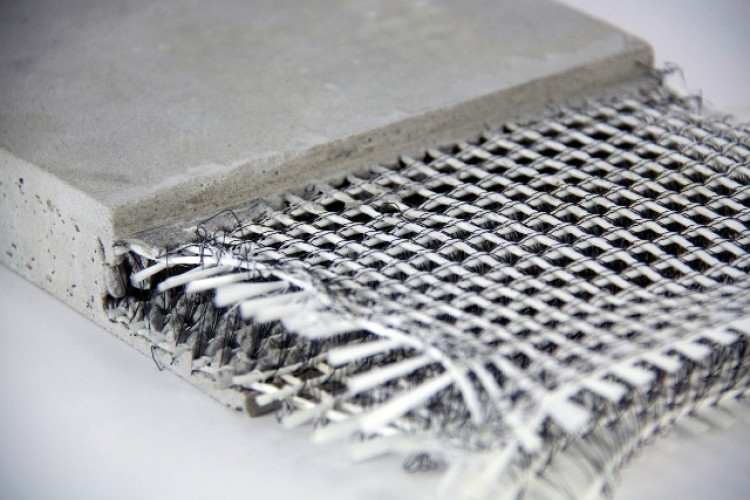Composites: The Future of Sustainable Building Materials
Composites: The Future of Sustainable Building Materials
Blog Article
Unlocking the Environmental Benefits of Recycled Composites in Building And Construction and Design
In the realm of building and layout, the use of recycled composites holds considerable assurance for enhancing sustainability methods and lowering ecological effect. The shift towards an extra sustainable future in these sectors pivots on opening the complete potential of recycled composites.

Environmental Effect Reduction
The reduction of environmental influence via making use of recycled composites in building and construction and style plays a crucial duty in lasting methods. By integrating recycled composites right into structure materials, the building sector can dramatically lower its carbon impact and add to a more green future. These sustainable products, made from repurposed plastics, timber fibers, or other recycled aspects, offer a practical alternative to traditional building products without jeopardizing on top quality or longevity.
Recycled composites assist divert waste from garbage dumps and minimize the demand for drawing out basic materials, hence preserving natural deposits. In addition, the manufacturing process of these composites usually takes in less power and discharges less greenhouse gases contrasted to creating virgin products (composites). This shift in the direction of making use of recycled composites not just minimizes ecological damage however additionally advertises a round economic climate by urging the reuse of materials that would certainly or else be disposed of
Waste Reduction
With an emphasis on reducing waste in building and construction and design, the assimilation of recycled composites uses a sustainable option to lower environmental influence. Waste reduction is a crucial aspect of lasting techniques, and making use of recycled compounds presents a possibility to attain this objective effectively. By making use of products that have currently served their initial function, such as recycled plastics or recovered timber fibers, the building and construction and layout sectors can considerably lower the quantity of waste produced and sent out to land fills.
Recycled compounds have the prospective to draw away significant quantities of waste from standard disposal techniques, contributing to a more round economic situation where sources are used efficiently. Furthermore, the manufacturing process of recycled compounds frequently eats much less power and generates less exhausts contrasted to virgin products, additionally lowering the ecological footprint of construction and layout jobs.
Applying waste minimization methods with the incorporation of recycled compounds not just assists in conserving natural deposits yet additionally advertises a much more lasting method to building and making for a greener future.
Power Conservation
Integrating recycled compounds not only minimizes waste in building and style but additionally plays a vital role in enhancing energy conservation techniques within the market. The usage of recycled composites in construction can significantly contribute to energy preservation through various ways. The manufacturing of virgin materials normally needs significant power inputs, whereas utilizing recycled composites takes in much less energy, thereby decreasing general energy consumption. In addition, including look at here now recycled composites can add to much better insulation homes in structures, lowering the demand for too much home heating or air conditioning, and subsequently decreasing power use for environment control. The lightweight nature of numerous recycled composites can lead to lighter structures, calling for much less power for transport and installation. By promoting the usage of recycled compounds in building and construction and layout, the industry can make substantial strides in the direction of accomplishing power efficiency and decreasing its carbon footprint, ultimately contributing to a more lasting developed setting.
Carbon Impact Reduction
Enhancing sustainability practices with the usage of recycled composites in building and construction and design dramatically lowers the carbon footprint of the industry. By incorporating recycled materials right into the production of composites, the requirement for virgin sources reduces, bring about lower power intake and greenhouse gas emissions related to standard production procedures. This reduction in carbon footprint is important in combating environment modification and promoting an extra eco-friendly method to building and construction and design.
Moreover, using recycled composites additionally assists in diverting waste from land fills, therefore mitigating the environmental effect of disposal and advertising a circular economy. The carbon footprint reduction attained via the fostering internet of recycled compounds lines up with the global push towards sustainable techniques and the reduction of commercial discharges. It showcases a dedication to liable source monitoring and a shift towards greener choices in the building and design industries. Eventually, by prioritizing the combination of recycled composites, the sector can make significant strides in decreasing its carbon impact and adding to a much more lasting future.
Sustainable Future
The combination of recycled composites in building and construction and style not just addresses prompt environmental problems yet likewise lays a solid structure for a lasting future in the sector. By integrating recycled compounds right into building materials and items, the building and construction and style fields can dramatically lower their reliance on virgin sources, resulting in a more round economic situation. This shift towards sustainability is important for minimizing the environmental influence of conventional building techniques, which frequently lead to high degrees of waste generation and source exhaustion.

Conclusion
In final thought, recycled composites use significant ecological advantages in building and construction and design by lowering ecological influence, minimizing waste, saving energy, reducing carbon footprint, and advertising a lasting future. Accepting the usage of recycled composites can add to a more environmentally-friendly method to building and style, eventually leading to a much more lasting and greener future for all.
The decrease of ecological impact through the use of recycled composites in building and construction and style plays an important role in sustainable methods.With a focus on lessening waste in building and construction and layout, the integration of recycled compounds uses a sustainable solution to lower ecological impact. By advertising the usage of recycled composites in building and construction and layout, the market can make substantial strides towards attaining energy performance and reducing its carbon impact, eventually contributing to a more sustainable constructed atmosphere.

Report this page